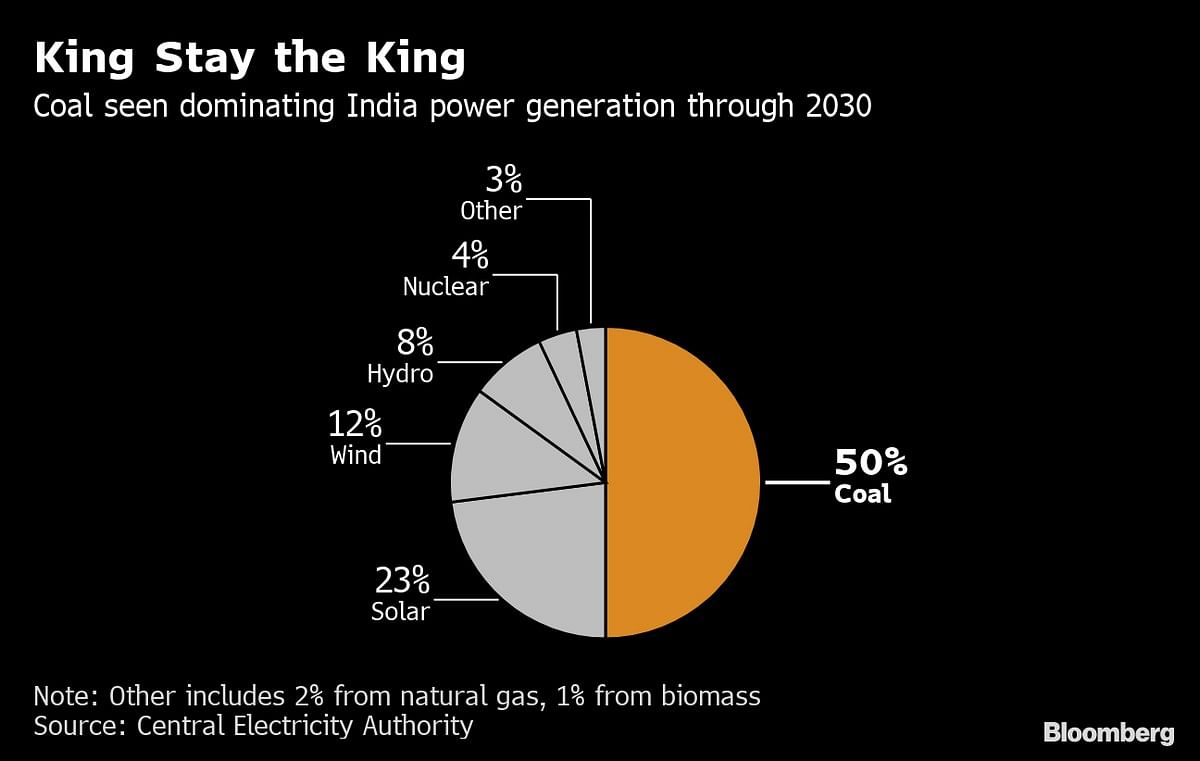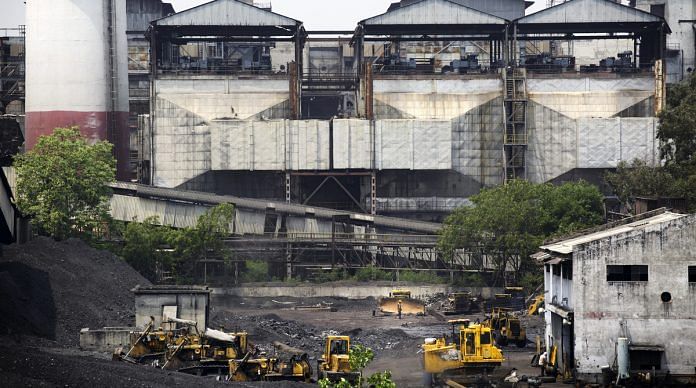New Delhi: Coal may account for half of India’s power generation in 2030 despite a boom in solar and wind energy projects, according to analysis by the country’s power-planning body.
The assessment, released Monday by the nation’s Central Electricity Authority, highlights that the nation has a large existing fleet of coal plants and that there’s a mismatch between peak periods of demand and output from renewables. That will leave a big role for the most-polluting fuel in the nation’s future electricity mix.
The CEA’s analysis shows that India may be able to exceed one of its 2015 Paris Agreement commitments — reaching 40% of installed capacity from non-fossil fuel sources. But the report also sees annual carbon emissions from the power sector rising about 12% from levels expected in 2022 to 1.154 billion tons. The report didn’t include an assessment of what that means for another key India goal — cutting emissions intensity of gross domestic product by as much as 35% from 2005 levels.
The report, which is an attempt to model the lowest-cost capacity mix to meet expected future demand, identifies the intermittent nature of renewables as a limiting factor for its use and advocates adopting grid-scale battery storage.
Also read: Clearances for coal blocks stuck, Modi can revive Manmohan Singh’s project monitoring group
Non-fossil fuel power sources, led by solar and wind, are seen generating 48% of gross generation, more than double what it was at the end of last year, while accounting for 65% of installed capacity, according to the report. India had 80 gigawatts of renewable capacity at the end of May and has set a goal to install 175 gigawatts by 2022.

Cost Trends
“The recent cost trends of renewable energy generation sources have given them the footing to compete with conventional sources of electricity generation,” according to the report.
India is projected to overtake the U.S. as the world’s second-biggest emitter of carbon dioxide from the power sector before 2030, as the nation’s electricity demand skyrockets, the International Energy Agency said in its World Energy Outlook last year.
While coal’s share in capacity is likely to drop to one-third, it will account for 50% of electricity generated, according to Monday’s report. It was about 72% of generation at the end of March, according to separate CEA data.
Also read: Indian electorate cares about electricity – but the power sector remains deeply challenged






